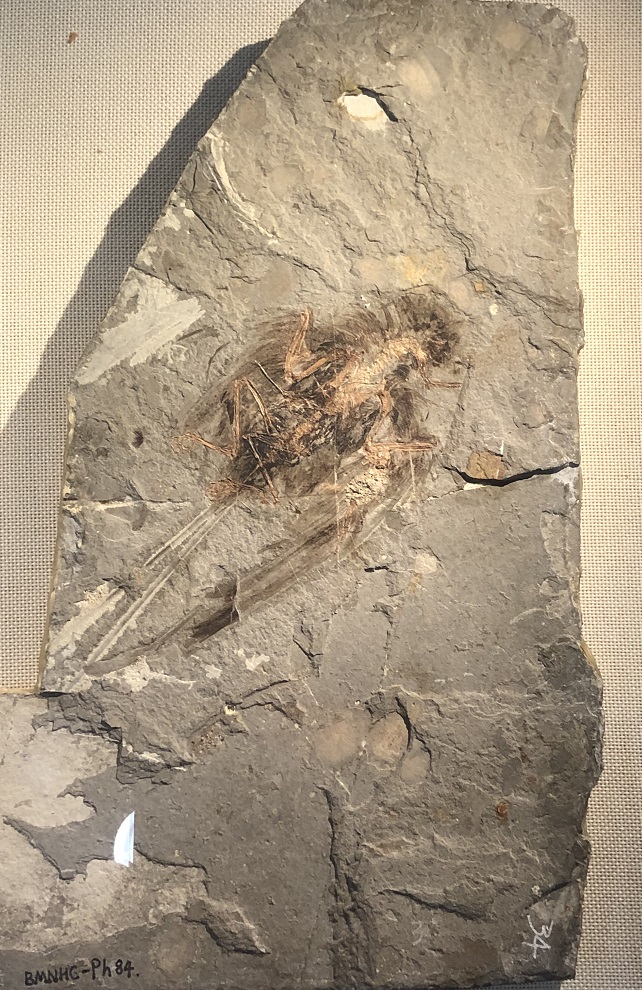BH Staff | October 2, 2022
Age and Locality: Early Cretaceous, Liaoning Province.

Cathayornis is an extinct genus of birds that lived during the Early Cretaceous period, approximately 125 million years ago. It is part of the group known as Enantiornithes, which were widespread across the world during the Mesozoic era but vanished at the end of the Cretaceous period, along with the non-avian dinosaurs. The fossils of Cathayornis have been primarily found in the Yixian Formation in Liaoning Province, China, an area renowned for its exceptionally well-preserved fossils that provide a detailed glimpse into life during the Early Cretaceous.
Cathayornis was relatively small in size, with a wingspan estimated to be around 50 centimeters (20 inches). It possessed several features typical of enantiornithine birds, such as a pygostyle (a fused terminal vertebra of the spine supporting the tail feathers), a keeled sternum for the attachment of flight muscles, and claws on its wings, suggesting it could grasp branches, indicating a life adapted to trees.
One of the distinctive features of Cathayornis, compared to modern birds, is the presence of teeth in its beak, a common trait among Mesozoic birds that highlights their evolutionary transition from theropod dinosaurs to the avian lineage. The teeth were likely used for capturing and consuming insects and other small prey.
The discovery and study of Cathayornis have contributed significantly to our understanding of avian evolution, offering insights into the diversity, ecology, and morphology of early birds. Its well-preserved fossils have helped paleontologists piece together the complex evolutionary puzzle of how modern birds emerged from their dinosaur ancestors, providing a clearer picture of the evolutionary history of birds.
